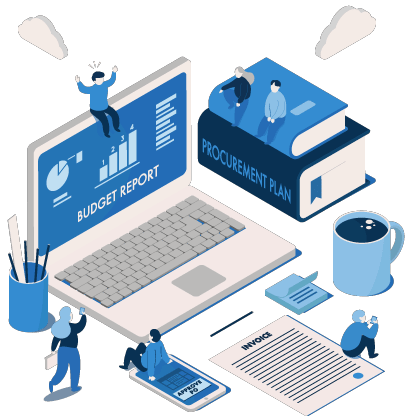The future of supply chain needs to be planned for. Key challenges and opportunities that are expected for supply chain professionals from now until 2025 include: realizing cost savings, rationalizing supply base, improving supply chain risk prediction and management, providing high level strategic foresight, collaboration and innovation with suppliers. Supply chain operations will depend on improvements in these areas and utilizing new technologies will be required to keep pace with supply chain leaders.
Supply disruptions are a common nightmare for any industry that relies on products and raw materials. Missing or delayed shipments, rising prices, and unexpected import tariffs can be enormously costly to a business with a tight operating budget. While you can’t foresee when something catastrophic will happen, you can prepare for future disruptions well in advance. Today’s technology allows you to accurately foresee and minimize supply chain threats.
Here are five powerful ways to minimize disruptions and future-proof your supply chain.
End-to-End Digital Integration
Modern technology connects every link in the chain, from the clerk on the sales floor to the supplier filling orders for delivery. The future of supply chain will depend more and more on modern technology to free up staff time for more value added tasks, we are already seeing this this growth in the American, European, and Chinese markets. It is only a matter of time before we see the proliferation of similar changes in India and Africa.
The ability to collect data from suppliers, distributors, and end-point distribution to a single dashboard offers visibility and better control of the entire process. Predictive analysis based on aggregated data from raw material procurement, logistics, and customer fulfillment is remarkably insightful.
In recent years, hurricanes, floods, and other natural disasters have disrupted supply chains all over the country, making roads impassable and areas inaccessible. Changing tariffs present new challenges to manufacturers, and compliance regulations and social responsibility commitments can complicate inventory sourcing. With an integrated system, shipments are tracked in real time, allowing businesses to respond as events are happening, without delay.
Investing in integrated technology simplifies all stages of supply chain management and offers the transparency and insight to improve processes and inform decision making.
Build Sustainable Supplier Relationships
Future-proofing the supply chain requires fostering supplier relationships based on trust and mutual benefit. Business reputations hang on product availability, which depends on suppliers. Identifying the suppliers best suited to your operation is a function of data analysis. Designate the suppliers who consistently deliver the goods – quality materials, on time, and for a competitive price.
With an integrated system, businesses can closely monitor suppliers for incidents that could signify unexpected changes, and respond before a pattern forms and business is affected. Primary and secondary suppliers can be evaluated as the relationships evolve, and buying decisions can be adjusted based on performance metrics and benchmarks.
By establishing and maintaining strong long-term relationships with preferred suppliers, your business positions itself as a preferred customer.
Optimize and Automate Supply Chain Management
An integrated supply chain network allows for seamless ordering and fulfillment, and process is one area where automation is a productivity game-changer. Data analysis features built into modern procurement systems are capable of analyzing hundreds of thousands of data points from different sources to provide decision guidance far more nuanced than humans are capable of.
Businesses still relying on humans to make every decision are being left in the dust as automated systems race forward. Within the next decade, industry will be dominated by robotics, artificial intelligence, and even driverless delivery, while humans have new roles to play. Companies that stay ahead of the game by automating what can be done now run less risk and will assess lower cost in the future when changeover is no longer an option, but an industry requirement.
Big data is worthless unless utilized; no inventory management system can be future-proof without efficient optimization. Ultimately, the end-to-end visibility of an optimized supply chain minimizes risk and maximizes service levels while enabling dramatic cost reduction.
The key to optimizing the supply chain is considering the big picture, from start to finish, rather than concentrating on improving each disparate part. Supply chain optimization is balancing the overall operation, making all the functions work together for better efficiency.
Adopt Responsible Practices
The transparency and interconnected nature of the internet has given rise to a new brand of consumer, one who is more incentivized by fair labor and responsible sourcing than seduced by brand names. The sense of global responsibility gave rise to socially conscious brands like Patagonia and Toms, and forced big business to embrace sweeping changes in their supply chain strategy.
The trend toward expectations of fair trade, sustainability, and ethical sourcing from manufacturing to delivery is unlikely to abate as younger consumers age. Companies need to adopt the social commitments common to their consumer base in order to ensure competitive advantage and long-term success.
Employ Synchromodal Transportation
Synchromodality is the logical future of the freight industry, and the most effective defense against supply chain disruption. Simply put, it is deciding the most efficient mode and pathway of transportation at each transfer point based on conditions, cost, time, and ethical considerations such as fuel emissions.
An efficient multi-modal system depends on real-time data information flow, often from a global supply chain network perspective. With an integrated end-to-end network, supply chain managers can switch transport modes in response to active events as they happen, choosing preferred cleaner and cheaper methods when possible, with the option to choose trucking, shipping, or other transportation modes to avoid delays as changes happen.
Imagine a scenario where a flood wipes out the tracks ahead of a scheduled rail shipment. Synchromodality would assess the threat in advance of the flood, assign the correct number of trucks to meet at a transfer point, and plot a passable route, reducing delays and minimizing risks.
At the moment, this technology is not in wide use, and may be unavailable to all but the world’s leading freight companies with proprietary systems. For the rest of us, it is the very near future of logistics and supply chain management, the next logical step in efficient delivery.
“The future of supply chain will see companies making data-driven decisions using predictive analytics can buffer against shifts in customer demand, plan ahead for raw material scarcity or pricing changes driven by catastrophic events.”
Integrate your system with our powerful inventory management solutions
Find Out How








